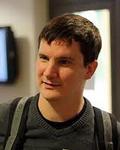Cited By
View all- Müller MPich J(2019)Feasibly constructive proofs of succinct weak circuit lower boundsAnnals of Pure and Applied Logic10.1016/j.apal.2019.102735(102735)Online publication date: Sep-2019
- Maly JMüller M(2018)A remark on pseudo proof systems and hard instances of the satisfiability problemMathematical Logic Quarterly10.1002/malq.20170000964:6(418-428)Online publication date: 20-Nov-2018
- Williams R(2017)Some ways of thinking algorithmically about impossibilityACM SIGLOG News10.1145/3129173.31291804:3(28-40)Online publication date: 28-Jul-2017



